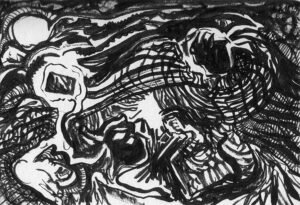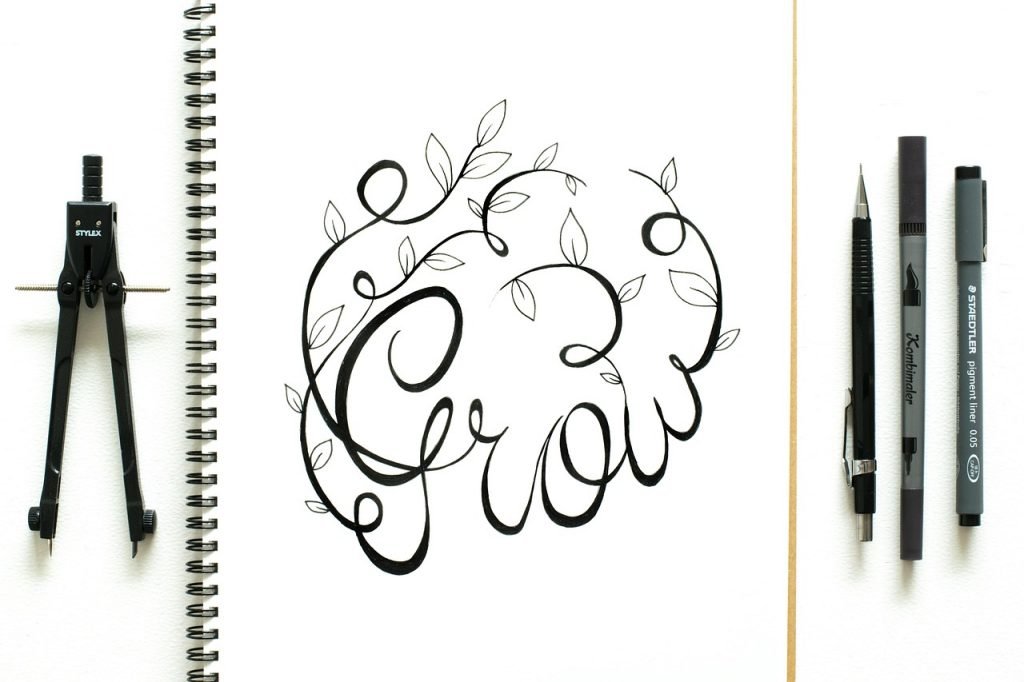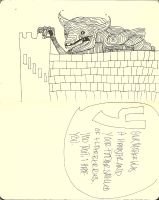Why Use a Compass in Your Sketchbook?
Sketchbooks are a playground for creativity, and using different sketching tools can enhance the depth and accuracy of your art. While pencils, pens, and erasers are staples in every artist’s toolkit, the compass is an often-overlooked but incredibly versatile tool that can add a whole new dimension to your sketching practice. Whether you’re drawing geometric patterns, detailed mandalas, or even exploring perspective drawing, the compass is a powerful addition to your arsenal of tools. In this blog post, we’ll explore the benefits of using a compass, share techniques to help you get started, and highlight how this tool can spark your creative journey.
A compass is not just a tool for geometry class; it’s an invaluable resource for creating precise shapes, circular patterns, and dynamic compositions. Its versatility makes it one of the most underrated drawing tools for both beginners and experienced artists.
Benefits of Using a Compass for Sketching
- Perfect Circles: Achieve flawless circular shapes of various sizes without guesswork.
- Geometric Accuracy: Draw arcs, curves, and concentric circles with precision, enhancing your technical skills.
- Creative Exploration: Use the compass to create intricate designs like mandalas, architectural sketches, or abstract patterns.
- Versatile Mediums: Works well with pencils, fine-liners, and even markers to suit a variety of artistic styles.
Adding a compass to your toolkit can help you explore new creative directions while improving your technical drawing abilities.
Getting Started: Choosing the Right Compass for Your Sketches
Not all compasses are created equal, and selecting the right one for your artistic needs is essential.
Types of Compasses for Artists
- Basic Compass: Ideal for beginners, this simple tool uses a pencil on one side to create circles and arcs.
- Beam Compass: Offers extended reach for drawing larger circles and is perfect for large-scale sketchbooks.
- Drafting Compass: Designed for technical precision, featuring adjustable settings and compatibility with pens or markers.
- Rotating Compass: Simplifies the process of drawing smooth, continuous curves with enhanced control.
Features to Look For
- Stability: Choose one with a sturdy design that minimizes wobbling.
- Adjustability: Ensure it has a smooth, adjustable arm for changing the circle radius with ease.
- Pencil Compatibility: Some allow you to attach your preferred pencils or drawing tools.
- Grip Comfort: A well-designed grip makes longer sketching sessions more comfortable.
Invest in a Quality – to ensure accuracy and durability in your projects.
Sketchbooks.org | VISUAL RESEARCH HUB
Using a Compass for Artistic Drawings
Visual research is critical for any creative endeavor. We have compiled specialized links to lead you directly to images, videos, and inspiration for "Using a Compass for Artistic Drawings" across the web's best visual search platforms.
How to Use a Compass for Artistic Drawing
Using a compass effectively requires understanding its functionality and practicing basic techniques.
1. Start with Simple Circles
- Place the point firmly on the paper to avoid slipping.
- Adjust the arm to your desired radius and gently rotate the pencil around the center.
- Practice drawing circles of varying sizes to get comfortable with the motion.
2. Create Concentric Circles
- Begin by drawing a small circle.
- Gradually adjust the radius outward, keeping the same center point, to create larger circles.
- Use this technique for mandalas, floral patterns, or sunburst designs.
3. Explore Arcs and Partial Circles
- Adjust the angle of rotation to draw arcs instead of full circles.
- Use arcs to build geometric patterns or decorative borders in your sketchbook.
4. Combine with Freehand Sketching
- Incorporate compass-drawn elements into freehand sketches to balance precision and creativity. For instance, use circles as a base for faces, flowers, or planets.
5. Create Symmetrical Designs
- Use the compass to divide a circle into equal segments, creating guides for symmetrical patterns such as snowflakes or mandalas.
Creative Ideas for Using a Compass
If you’re new to this tool, here are some projects to inspire your exploration:
Mandalas and Pattern Art
- Use it to draw the framework for intricate mandala designs.
- Add layers of repeating geometric shapes to create mesmerizing patterns.
Perspective Drawings
- Draw circles to represent vanishing points or curved surfaces.
- Combine compass work with linear perspective to create depth in architectural sketches.
Abstract Artwork
- Experiment with overlapping circles, arcs, and curves to build abstract compositions.
- Use color to highlight different layers or sections of the design.
Technical Illustrations
- Create precise diagrams or mechanical drawings with evenly spaced components.
- Apply compass work to design architectural elements like domes or ornamental details.
Nature-Inspired Sketches
- Draw tree rings, flower petals, or planetary orbits.
- Use concentric circles to illustrate ripples in water or radiating energy.
Tips for Enhancing Your Compass Skills
Mastering the compass takes practice, but these tips can help you improve:
Practice Consistency
- Keep the point steady to avoid creating uneven circles.
- Use a smooth, even motion to draw clean lines.
Experiment with Mediums
- Try using different tools in the compass, such as fine-liner pens, colored pencils, or gel pens, to create varied effects.
Combine Techniques
- Use it alongside rulers, protractors, or freehand sketching to create more complex designs.
Incorporate Shading
- Add depth to compass-drawn designs by shading sections or blending colors.
- Explore techniques like cross-hatching or gradient fills to make your sketches stand out.
Personalize Your Work
- Incorporate your own style by mixing compass-drawn elements with freehand doodles or detailed illustrations.
The Role of Compass in Sketching Tools Through Art History
The compass has played a pivotal role in art and design throughout history. From ancient architecture to modern engineering, this tool has enabled precise and stunning creations.
Renaissance Influence
Artists like Leonardo da Vinci used the compass to study proportions and draw geometric shapes, contributing to masterpieces like Vitruvian Man.
Architectural Marvels
Compasses have been instrumental in designing domes, arches, and other architectural elements that rely on symmetry and precision.
Modern Art and Graphic Design
In the digital age, the compass remains relevant as a symbol of technical artistry, often used in conjunction with drafting tools and software.

Sketchbooks.org | TIPS AND HACKS
The Art of Imperfection | Why Messy Sketchbooks Matter More Than You Think
Why Messy Sketchbooks Deserve Respect Embracing the Beauty of Imperfection Messy sketchbooks are often misunderstood. Smudges, torn pages, and half-finished ideas may look chaotic, but they’re signs of creative momentum. These pages capture raw emotion,...
Why Add a Compass to Your Sketching Tools?
Incorporating a compass into your artistic practice brings a new level of precision and creativity. It challenges you to think beyond freehand sketching, exploring geometric beauty and structured designs.
- Expand Your Skill Set: Learning to use a compass enriches your artistic toolbox.
- Boost Your Creativity: The unique patterns and forms you can create inspire fresh ideas.
- Improve Your Technique: Precision tools like the compass help you refine your overall drawing skills.
Final Thoughts
A compass is more than just a technical instrument—it’s a source of inspiration and innovation for artists. By adding this versatile tool to your sketching tools, you’ll unlock new possibilities for creativity, precision, and expression. From mandalas to architectural designs, the compass helps you elevate your sketchbook practice and take your art to the next level.
Call to Action
Ready to get technical with your sketchbook? Grab a compass and start experimenting with circular designs, patterns, and shapes!
Ready to Share Your Work?







